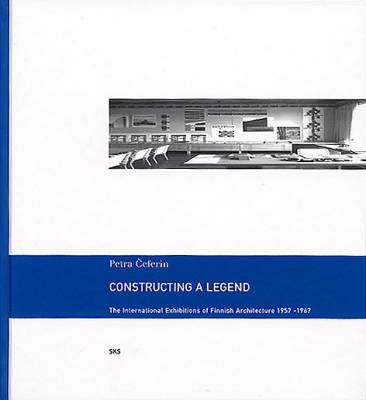Constructing a legend — the international exhibitions of finnish architecture 1957-1967
Ceferin, PetraProduktinformation
| Titel: | Constructing a legend — the international exhibitions of finnish architecture 1957-1967 | ||
| Författare: | Ceferin, Petra (Författare) | ||
| Artikelnummer: | 9517465424 | ||
| Form: | Inbunden | ||
| Tillgänglighet: | Leveranstid 1-3 vardagar | ||
| Pris: | 24,00 € (21,05 € moms 0 %) | ||
|
|||
| Förlag: | SKS Kirjat |
| Serie: | Suomalaisen Kirjallisuuden Seuran toimituksia 945 |
| Upplaga: | 1. upplaga, 2003 |
| Språk: | engelska |
| Antal sidor: | 199 |
| Produktgrupp: | Konst och arkitektur Books in English |
| Bibliotekssignum: | 72.92 Arkitekturens historia, Finland |
In Constructing a Legend, architect-researcher Petra Ceferin takes a critical, strikingly fresh look at
the international image surrounding Finnish architecture today, and more importantly, what lies
behind it, why this particular image emerged.
The Museum of Finnish Architecture was created, in part, to promote Finnish architecture abroad.
Employing a series of carefully crafted exhibition tours comprised largely of photographs, the
museum strove to define and disseminate the best architecture the country had to offer. Both the
name and work of the renown Alvar Aalto lent credibility and celebrity to these events, capturing
the imagination of the public and the press alike.
Ceferin sees this exhibition-process as the making of a legend, a rich story handed down from the
past, the truth of which she questions with a rare mix of revealing empirical research and a sharp
sense of investigative irony.
the international image surrounding Finnish architecture today, and more importantly, what lies
behind it, why this particular image emerged.
The Museum of Finnish Architecture was created, in part, to promote Finnish architecture abroad.
Employing a series of carefully crafted exhibition tours comprised largely of photographs, the
museum strove to define and disseminate the best architecture the country had to offer. Both the
name and work of the renown Alvar Aalto lent credibility and celebrity to these events, capturing
the imagination of the public and the press alike.
Ceferin sees this exhibition-process as the making of a legend, a rich story handed down from the
past, the truth of which she questions with a rare mix of revealing empirical research and a sharp
sense of investigative irony.





